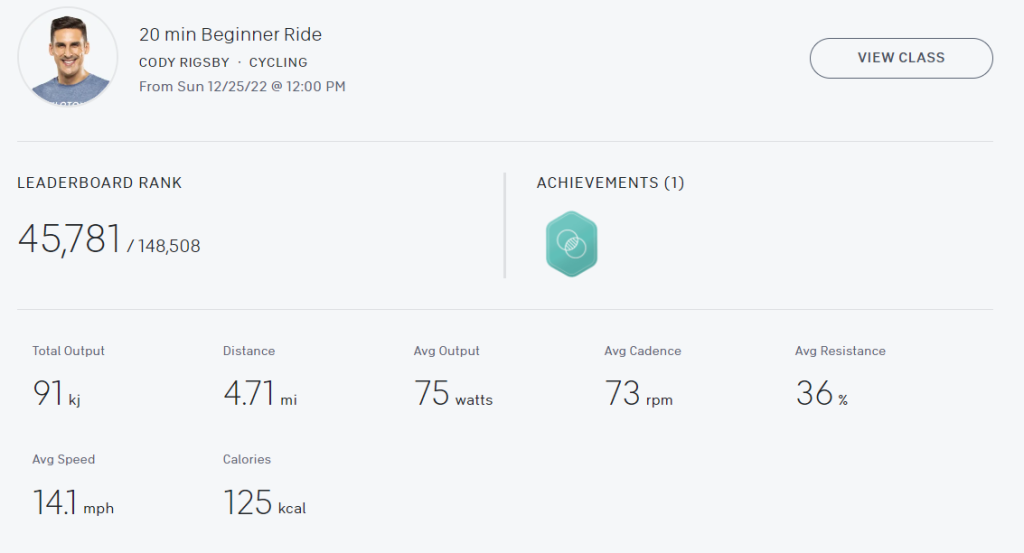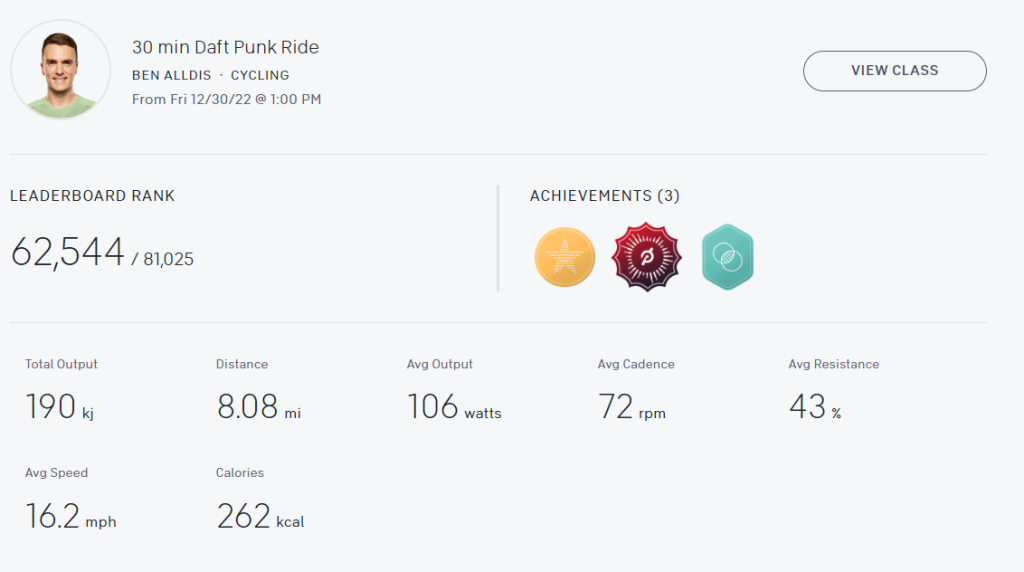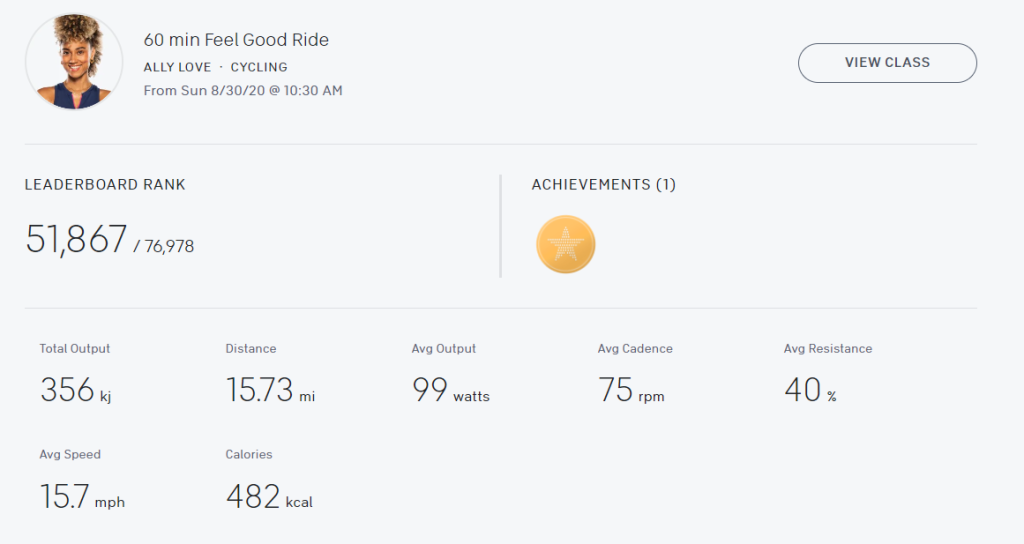How Many Calories Does A Peloton Ride Burn? [The Truth]

Peloton has become a very popular cardio workout, but how many calories does it actually burn? It turns out, the number of calories you can burn in a Peloton session depends on a variety of factors, such as your weight, the duration of your ride, and the intensity of your workout – but you already probably knew that.
On average, most people who do a 45-minute Peloton ride can expect to burn between 400 and 700 calories. However, this number can vary based on your own body weight and fitness level. Heavier riders may burn more calories than lighter riders, and those with higher fitness levels will often burn more than those who are just starting out.
So let’s explore further to learn more about how many calories you can expect to burn with a Peloton ride and what other benefits it has to offer.
What Factors Affect the Calories Burned on a Peloton Ride?
There are several factors that play into calorie burn on a Peloton ride, let’s start with the biggest two for now.
- Weight: Weight plays a significant role in how many calories you burn during a Peloton workout. Heavier individuals burn more calories because they require more energy to move their bodies. For example, a 180-pound person can burn around 400-600 calories during a 45-minute Peloton ride, while a 130-pound person may burn 250-400 calories during the same ride. Life is unfair sometimes, right? (Just kidding!)
- Duration: The longer your workout, the more calories you’ll burn. A 30-minute Peloton ride can burn between 200-400 calories, depending on the factors mentioned above. If you extend your workout to an hour or more, you’ll be burning even more calories.
The next factor is your intensity, and this can be broken down into many parts that all relate specifically to how a Peloton ride works. Here are some of those factors:
- Resistance level: The resistance you choose for your ride can impact the number of calories you burn. Increasing the resistance can increase the intensity of your workout and result in a higher calorie burn. Obviously, the resistance changes throughout the ride, so you’ll want to look at your average for the ride.
- Cadence: Cadence refers to the number of revolutions per minute (RPM) of the pedals. A higher cadence can increase your heart rate and result in a higher calorie burn.
- Instructor and class type: This is often overlooked, but different Peloton instructors and class types (such as HIIT or endurance) may have different levels of intensity, which can impact your calorie burn.
- Age and gender: Age and gender can impact your metabolism, which can affect how many calories you burn during your workout.
- Fitness level: Lastly, your current fitness level can also affect your calorie burn. If you’re just starting out, you may not be able to work as hard as someone who has been riding for years, which could impact the number of calories you burn.
Which Peloton Rides Burn The Most Calories?
As you saw above, the number of calories burned during a Peloton ride can vary widely depending on many factors such as weight, age, gender, intensity, duration, resistance, cadence, and the class type you choose.
That being said, there are a few types of Peloton rides that generally burn more calories than others:
- High-Intensity Interval Training (HIIT) Rides: HIIT rides are typically shorter in duration but more intense, with intervals of high-intensity efforts followed by periods of rest or recovery. HIIT rides can burn a high number of calories in a short amount of time because they raise your heart rate and require a lot of energy.
- Power Zone Rides: Power Zone rides are designed to improve your overall fitness and endurance by targeting specific heart rate zones. These rides typically involve longer durations and varying levels of intensity, making them a great option for burning calories over an extended period.
- Endurance Rides: Endurance rides are longer, steady-state rides that focus on building endurance and stamina. While they may not burn as many calories in a shorter time period as HIIT rides, they can burn a significant number of calories over a longer duration.
Calories Burned By Specific Duration On Peloton
So, in this section, I wanted to show some real-life examples of calorie burn by rides. I’ll show you some actual classes I took, all with different instructors on different days. There’s a 20-min ride, a 30-min ride, and a 60-min ride. Some other factors to keep in mind, I am a 33-year-old male, use my Peloton semi-regularly, and am in pretty decent shape.
I’ll also show you my entire energy output and average cadence so you get a better picture of the effort that was put in (or lack of effort.)
How Many Calories Can You Burn On A 20-Minute Ride?

As you can see here, this was a beginner ride with Cody Rigsby (who’s also one of my favorite instructors), and in 20 minutes I burned 125 calories.
How Many Calories Can You Burn On A 30-Minute Ride?

I still remember this ride – was quite challenging. In this 30-minute ride, I burned 262 calories.
How Many Calories Can You Burn On A 60-Minute Ride?

I was feeling confident this day and took on an hour long ride. In this 60-minute ride, I ended up burning 482 calories. Another thing to note here, I was using Peloton with a toe cage for this ride.
Are Peloton Rides More Calorie Efficient Than Regular Biking?
Peloton rides can be just as calorie-efficient as regular biking or even more so, depending on the specific factors involved. In fact, many people find that they burn more calories during a Peloton ride than they do during a regular outdoor ride due to the controlled environment, increased resistance, and structured workouts.
Some potential benefits of Peloton rides include:
- Controlled environment: Peloton rides take place indoors, which means you won’t have to contend with the elements or traffic that can slow you down or require more effort on outdoor rides. This can allow you to maintain a more consistent effort level and potentially burn more calories.
- Increased resistance: Peloton bikes have adjustable resistance levels, which means you can increase the intensity of your ride and challenge yourself to burn more calories. The ability to adjust resistance allows for more variety in your workout and can help you push yourself harder than you might be able to on an outdoor ride. If you live in a state as flat as Texas (like me) – good luck with that.
- Structured workouts: Peloton rides are often structured with specific intervals, cadence goals, and resistance levels, which can help you stay on track and push yourself to burn more calories.
That being said, outdoor biking can also be a great way to burn calories, and the intensity and calorie burn will depend on the terrain, speed, and other factors involved. Personally, I love outdoor biking, but Peloton just makes it easy. The most important thing is to find a workout routine that you enjoy and that challenges you to meet your fitness goals.
Conclusion
You’ll definitely be burning calories on a Peloton. But the key is consistency. Slowly acclimate yourself towards more rides, longer rides, and challenging rides. Eventually, you’ll stop looking at the calories burned and be more focused on completing your next challenging ride!



![How To Prevent Knee Pain On An Elliptical [Explained]](https://149924277.v2.pressablecdn.com/wp-content/uploads/2023/07/CamScanner-07-12-2023-13.09-1-e1689131506597-768x764.jpg)
![What to eat before Orangetheory [Pre-Workout Meals]](https://149924277.v2.pressablecdn.com/wp-content/uploads/2023/06/What-To-Eat-Before-Orangetheory-768x768.jpg)

